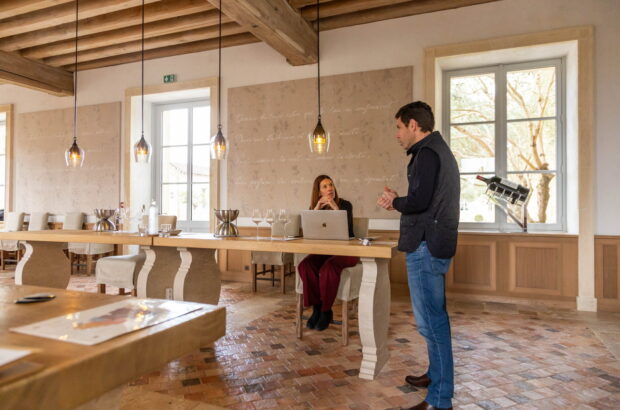I’m a massive fan of English sparkling wines, which are getting better with every vintage, aided by the changing climate, of course – the grapes are filling up with sun, and you can taste that in the glass. So how can we convince consumers not to overlook English sparkling wine, and show them that it is a real contender: often just as good, if not better than Champagne? Perhaps by pitting the two against each other in a special blind tasting by the experts, Judgement of Paris style. Judgement of London, let’s say… Who knows what would happen?
Of course, the Champenois have more to lose by participating in such a tasting. But it’s not as simple as Champagne vs English sparkling. Right from the early days when Francophile and wine lover Major-General Sir Guy Salisbury-Jones planted the first vines at Hambledon, in 1952, he did so with help and advice from his friends at Pol Roger. Today, Taittinger and Pommery are among the high-profile Champagne houses to have planted vines on English soil, and this association should help growers on both sides of the Channel.
Realistically, there’s no need for the Champenois to feel threatened by English sparkling – the quantities of the latter are tiny in comparison, and the category just doesn’t have the power and market penetration of Champagne. Or, of course, the reputation among consumers. There is no wine category as bound up with social status and image as Champagne. If you’re a Krug drinker, you’re obviously in the upper echelons of society and very successful. If Moët or Veuve Clicquot is your drink of choice, you are more in the mainstream. If it’s artisanal, small-grower Champagne that you turn to, it shows you probably have a greater knowledge of the region.
The name Champagne holds such a high status for the consumer that I sometimes question whether we are actually drinking what’s inside the bottle – or just the label. With marketing playing such a huge role in Champagne’s success, and the name ‘Champagne’ being protected for traditional-method wines from that region, sparkling wines from elsewhere (not just England, but Tasmania, Franciacorta and everywhere else) do have hurdles to climb. But the quality is there.
A monumental shift needs to happen here, and it’s not going to happen overnight. It will require English sparkling brands to invest heavily in marketing – at the moment the wines are not as readily available as Champagne on the high street; you don’t see the same spend on advertising; and although many UK restaurants and bars do now list English sparkling wines, there aren’t enough offering them by the glass.
English sparkling wines also need to be confident enough to plough their own furrow. The focus needs to be on mass marketing rather than a massive rebranding. It doesn’t surprise me that the [once-proposed] term ‘Britagne’ didn’t catch on – why the need to emulate Champagne? Awarding PDO (Protected Designation of Origin) status to Sussex was perhaps another misstep – yes it made English sparkling into a talking point, but why do something that implies the county of Sussex is superior to the other regions?
English wine estates need to play the long game. Once quality is established, it’s about establishing the brands. Coca-Cola and Pepsi have never stopped advertising, even after all these years – these big brands have been marketing their products since they started. With Champagne, people tend to be very loyal to one or two brands. English sparkling wine hasn’t established itself in the same way yet, and people are still wary. They know it’s on the up, but the wider market is yet to see it.
There needs to be more conversation in order for English sparkling wine to really have a chance to penetrate the market. The more we talk about it in the same context as Champagne, the more we’ll put English sparkling wine on the map.
Fred Sirieix is author of Wine Uncorked: My Guide to the World of Wine – available through Amazon UK
What I’ve been drinking
The Hambledon Vineyard, Première Cuvée Brut NV (£44-£55 Widely available) is a wonderful wine. A blend of the three main traditional Champagne varieties, it’s made from grapes grown in soils very similar to those found in some of the best crus of Champagne, and the result is pure pleasure. Crisp, lively and fruity, it has notes of citrus, apple, apricot and brioche. There’s lovely mouthwatering acidity and a balanced richness, too.













